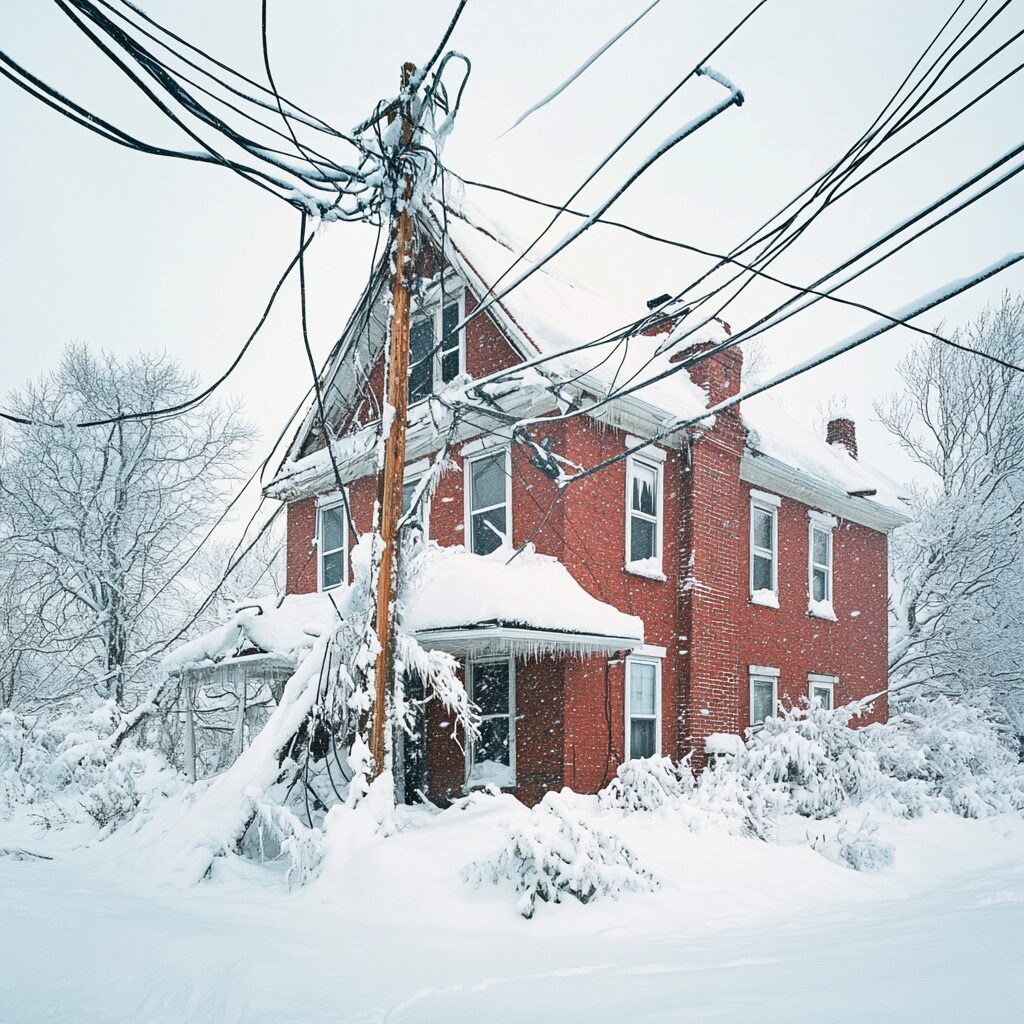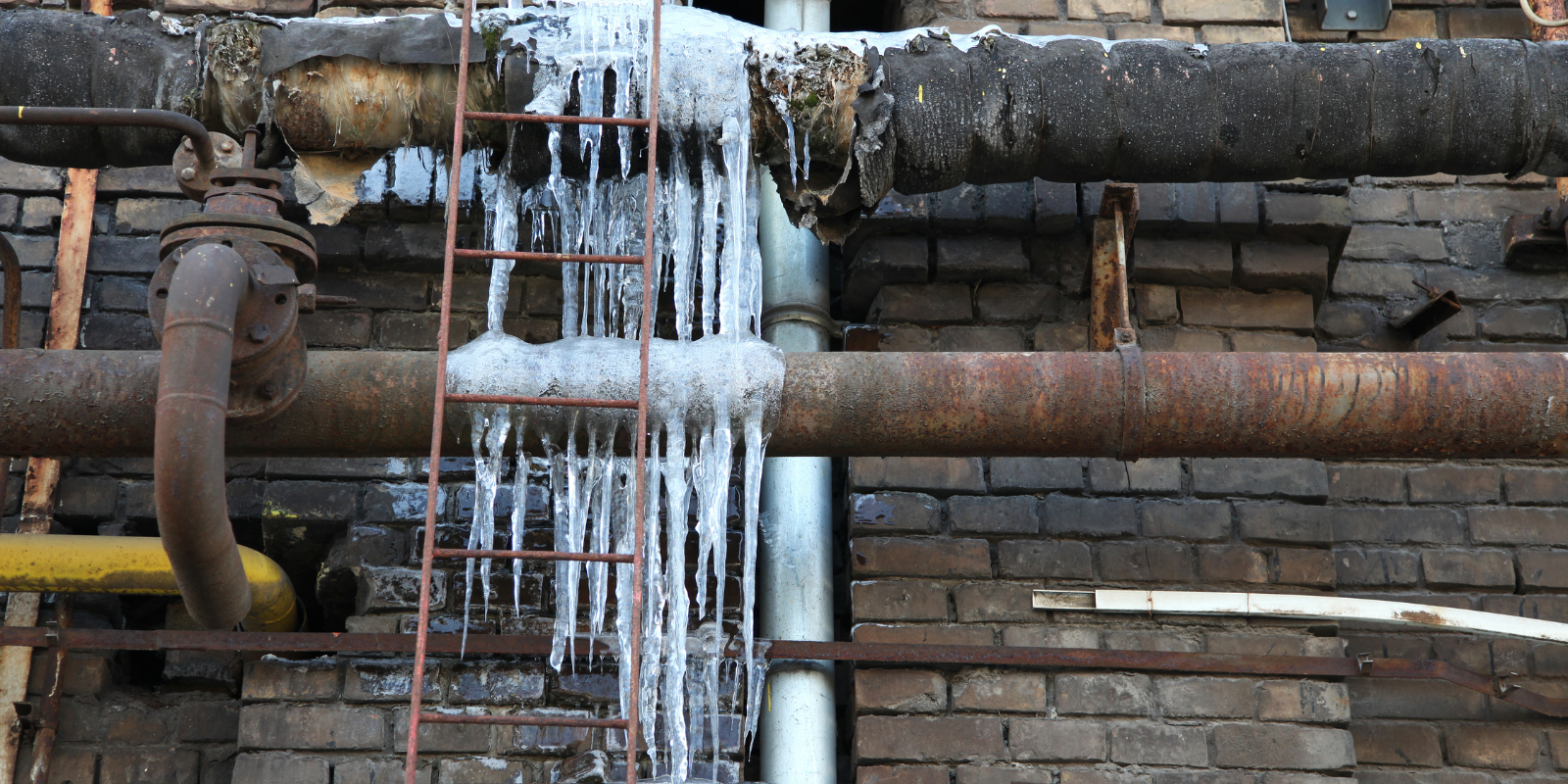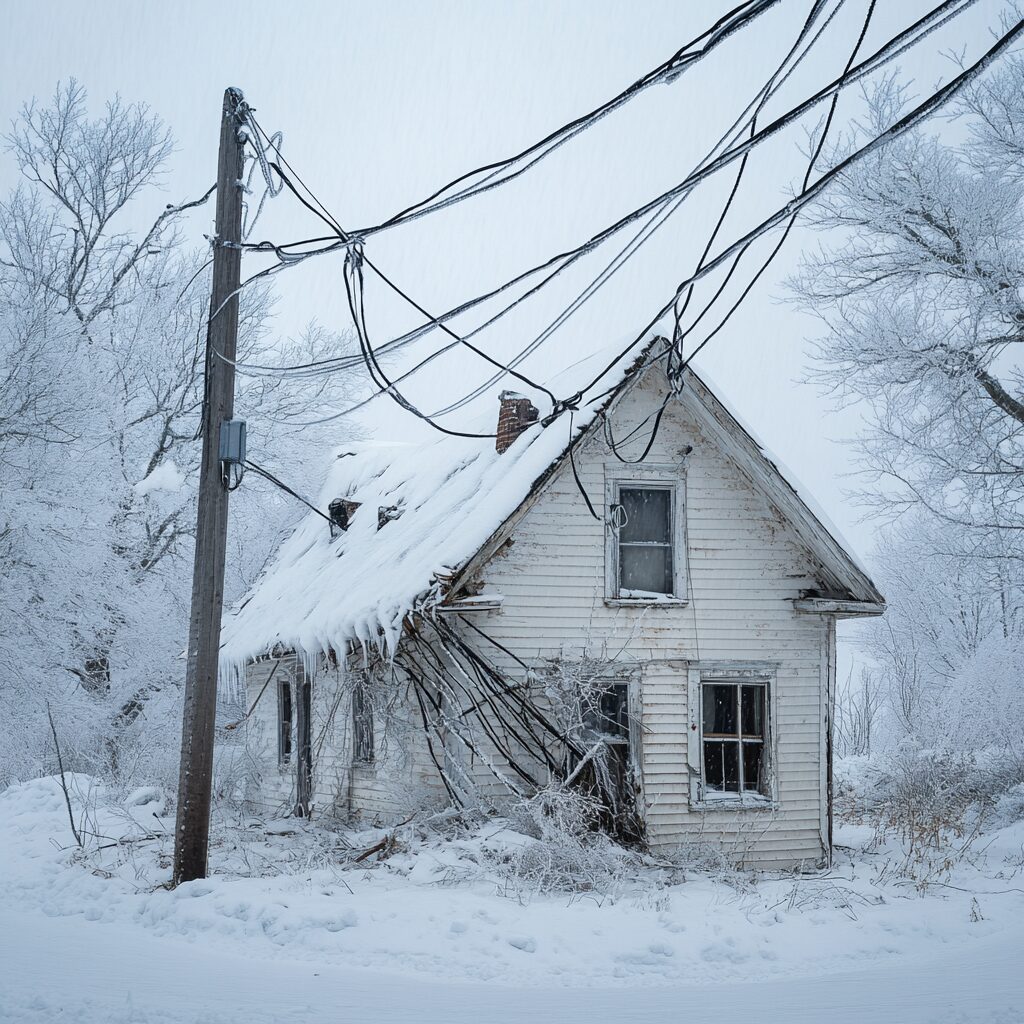
Winter Water Damage: Top 10 Issues, Prevention Tips, Solutions
Winter brings picturesque snowscapes, but it also brings the potential for water damage to your property.
In this comprehensive guide, we’ll navigate through the top 10 common water damage issues during winter, offer preventive tips, explore solutions, delve into the costs of restoration, and answer the top 10 frequently asked questions.
Let’s get right into it!
What Are The Most Common Causes Of Water Damage In Winter?
1. Frozen Pipes: A Leading Culprit
Frozen pipes top the list of common winter water damage issues. As temperatures plummet, pipes can freeze, leading to cracks and potential bursts. Understand the causes and preventive measures to safeguard your plumbing.
2. Ice Dams and Roof Leaks
Ice dams forming on roofs pose a threat, causing water to seep into your home. Learn about the factors contributing to ice dams and discover effective strategies to prevent roof leaks.
3. Faulty Gutters: A Hidden Menace
Clogged or faulty gutters can exacerbate water damage issues. Explore the impact of neglected gutters and discover tips for regular maintenance to prevent water accumulation.
4. Inadequate Insulation
Insufficient insulation can lead to various problems, including frozen pipes and ice dams. Learn about the importance of proper insulation and how to bolster your home against winter’s chill.
5. Burst Water Heaters
Cold temperatures strain water heaters, making them susceptible to leaks or bursts. Explore ways to maintain your water heater during winter and prevent potential flooding.
6. Basement Flooding: A Persistent Concern
Winter brings increased risks of basement flooding due to melting snow and ice. Uncover strategies to fortify your basement against water infiltration.
7. Cracked Foundations
Sub-zero temperatures can cause the ground to freeze and lead to foundation cracks. Understand the signs of foundation issues and implement preventive measures.
8. Sump Pump Failures
Sump pumps play a vital role in preventing basement flooding. Learn about common reasons for sump pump failures and how to ensure their optimal performance.
9. Poorly Sealed Windows and Doors
Drafty windows and doors can contribute to water damage by allowing cold air and moisture to seep into your home. Discover tips for proper sealing to mitigate this risk.
10. Appliance Leaks
Appliances like dishwashers and washing machines can develop leaks during winter. Explore preventive maintenance to avoid surprises and water damage.
 Top 10 Prevention Tips For Winter Water Damage
Top 10 Prevention Tips For Winter Water Damage
1. Insulate Pipes and Attic Spaces
Proper insulation is key to preventing frozen pipes and ice dams. Ensure your pipes and attic spaces are well-insulated.
2. Regular Gutter Maintenance
Prevent water accumulation by routinely cleaning and inspecting your gutters for any debris or clogs.
3. Seal Windows and Doors
Eliminate drafts by sealing windows and doors, reducing the risk of cold air and moisture entering your home.
4. Maintain Sump Pump Functionality
Regularly test and maintain your sump pump to avoid basement flooding.
5. Invest in Quality Insulation
Bolster your home’s insulation to protect against foundation cracks and other cold-weather issues.
6. Monitor Water Heater Health
Check your water heater for signs of wear and tear, ensuring it can withstand winter demands.
7. Prevent Appliance Leaks
Inspect and maintain appliances regularly to prevent unexpected leaks and water damage.
8. Install Leak Detection Devices
Utilize technology to your advantage by installing leak detection devices to alert you of potential issues.
9. Educate Family Members
Ensure everyone in your household is aware of winter water damage risks and preventive measures.
10. Consider Professional Inspection
Engage professionals to assess your home’s vulnerability to winter water damage and recommend tailored solutions.
Top 10 Solutions To Prevent And Address Winter Water Damage
1. Insulate Pipes
Frozen pipes are a leading cause of winter water damage. Insulating pipes with foam insulation sleeves or heat tape can prevent freezing and bursting during cold temperatures.
2. Seal Cracks and Gaps
Inspect your home for gaps or cracks in the foundation, walls, or around windows and doors. Sealing these with caulk or weatherstripping keeps cold air out and reduces the risk of freezing.
3. Maintain Gutters and Downspouts
Clogged gutters can cause water to overflow and freeze, leading to ice dams. Regularly clean and ensure downspouts direct water away from the foundation to prevent seepage.
4. Install Sump Pumps With Backup Power
A sump pump is crucial for homes prone to basement flooding. Equip it with a battery backup to keep it operational during winter power outages.
5. Use Dehumidifiers
High humidity in winter can lead to condensation, contributing to water damage. A dehumidifier helps maintain optimal indoor moisture levels.
6. Grade Landscaping Away From The House
Ensure your yard slopes away from the home’s foundation. Proper grading prevents melting snow and rain from pooling near your foundation, reducing the risk of seepage.
7. Monitor Indoor Temperature
Keep your thermostat set above 10°C (50°F) even when away to prevent indoor pipes from freezing. Smart thermostats allow remote monitoring and adjustments.
8. Install Water Leak Detectors
These devices provide early alerts to leaks or excessive moisture, enabling swift action to minimize damage.
9. Remove Snow Build-Up Around The Foundation
Snow piling up near your home can lead to melting water seeping into the basement. Regularly clear snow from around the foundation.
10. Perform Regular Roof Inspections
Snow and ice accumulation can cause roof leaks or collapses. Check for damaged shingles, flashing, or other vulnerabilities and address them before winter hits.
10 Most Common Popular Winter Water Damage Cases And Their Costs In Fixing Them
1. Frozen and Burst Pipes
Frozen pipes can crack or burst, causing water leaks.
Cost to Fix: $200 to $1,000 for pipe repair; $2,000 to $5,000 if water damage restoration is needed.
2. Ice Dams on Roofs
Ice dams form when snow melts and refreezes at the roof’s edge, causing water to back up under shingles.
Cost to Fix: $500 to $2,000 for removal; $2,000 to $6,000 for roof repair and water damage restoration.
3. Basement Flooding
Melting snow or groundwater can seep into basements, causing water damage.
Cost to Fix: $1,000 to $10,000, depending on the severity and whether a sump pump or drainage system is required.
4. Foundation Cracks
Expanding ice can crack foundations, leading to leaks.
Cost to Fix: $500 to $3,000 for minor cracks; $10,000 to $25,000 for major structural repairs.
5. Attic Water Leaks
Poor insulation or ventilation can cause condensation and leaks in attics.
Cost to Fix: $1,000 to $3,500, including insulation replacement and leak repair.
6. Sewer Backups
Freezing temperatures can cause sewer lines to back up into homes.
Cost to Fix: $1,500 to $6,000, depending on the extent of cleaning and repairs needed.
7. Mould Growth From Water Damage
Persistent moisture from leaks can lead to mould growth, posing health risks.
Cost to Fix: $500 to $5,000 for mould remediation, depending on the affected area.
8. Water Damage From Broken Water Heaters
A failed water heater in winter can cause significant water damage.
Cost to Fix: $500 to $1,500 for replacement; $2,000 to $7,000 for additional water damage restoration.
9. Ceiling Leaks From Heavy Snow
Heavy snow can overload roofs, leading to leaks or even collapses.
Cost to Fix: $1,000 to $4,000 for minor ceiling repairs; $10,000+ for major structural damage.
10. Exterior Wall Leaks From Snow Build-Up
Snow accumulation against walls can lead to leaks and water damage inside.
Cost to Fix: $800 to $3,000 for repair and waterproofing; $5,000 to $10,000 for extensive damage.
Note: Costs vary based on location, severity, and service providers. Always seek multiple quotes to ensure competitive pricing.
FAQs
1. Can I prevent frozen pipes without professional help?
Discover DIY methods for preventing frozen pipes without relying on professional assistance.
2. Are ice dams covered by home insurance?
Understand the nuances of home insurance coverage concerning ice dams and associated damages.
3. What signs indicate a failing sump pump?
Learn about common signs of sump pump failure and when to seek repairs or replacement.
4. How can I tell if my foundation has cracks?
Explore visual cues and signs indicating foundation cracks, and understand when to consult professionals.
5. Are appliance leaks common during winter?
Understand the factors contributing to appliance leaks during winter and preventive measures.
6. How often should I inspect my gutters?
Discover the optimal frequency for gutter inspections and maintenance to prevent water damage.
7. Are foundation cracks a severe issue?
Understand the potential consequences of foundation cracks and when to address them promptly.
8. Can water damage lead to mold growth?
Explore the connection between water damage and mold growth, and how to prevent it.
9. Are there insurance policies specifically for winter water damage?
Learn about specialized insurance policies that cover winter-related water damage issues.
10. Should I invest in a home inspection before winter?
Understand the benefits of a professional home inspection to assess vulnerability to winter water damage.
Conclusion
Navigating the complexities of winter water damage requires a proactive approach. By familiarizing yourself with common issues, implementing preventive measures, understanding potential solutions, and being informed about costs and FAQs, you can safeguard your home and enjoy a worry-free winter.
If you have any questions about our article, “Winter Water Damage: Top 10 Issues, Prevention Tips, Solutions” or need water damage services contact us at 1-833-WE-DRY-IT any time 24/7/365 all the time, we’re there when you need us!
Related Posts
Fire Damage Restoration Articles
The Dos And Don’ts Of Commercial Fire Damage
Forest Fire House Damage: What To Do After Your House Is Damaged By A Forest Fire And Who to Call?
Fire prevention tips for the summer
How to clean up after a house fire
Fire damage restoration checklist
Fire damage tips: 6 hazards property owners miss
How smoke from fires can negatively affect your health
What are the most common causes of house fires?
10 helpful smoke damage cleaning tips
Mould Removal Restoration Articles
Is Bathroom Mould Dangerous? Powerful Mould Prevention Tips Inside
Dangers Of Bathroom Mould And Tips On How To Clean And Prevent It
Got Bathroom Mould? Here Are Some Must-Know Bathroom Mould Cleaning Tips
5 Signs You Have Mould Growing In Your Walls
“Can I Remove Mould Myself?” Our Mould Removal Experts Have Answers
7 Must-Know Reasons Why You Should Get A Mould Inspection Before Buying A House
Does Mould Attract Bugs? Yes And Here’s What Kind And Why
How To Remove Mould From The Attic [Mould Prevention Tips Inside]
How Rain Causes Mould Growth-Prevention Tips Included
Must-Know Tips: How To Remove Mould In Your Basement
Water Damage Restoration Articles
How to prevent home storm damage
What you can expect from a fire damage restoration company
Water damage prevention tips from the most common problems we’ve seen
Top causes of water damage in commercial buildings and how to find them
Must-know water damage tips: What to do after your house floods
What does good water damage restoration look like?
DIY water damage restoration and the hidden dangers
How to choose the right water damage company
Flast floods: What to do before, during and after a flash flood
What to do when your attic leaks?
This is why water damage is a silent home killer
Related Water Damage Services
Fire damage restoration services
Water damage restoration services
Emergency cleanup services
Mould removal services
Weather damage services



